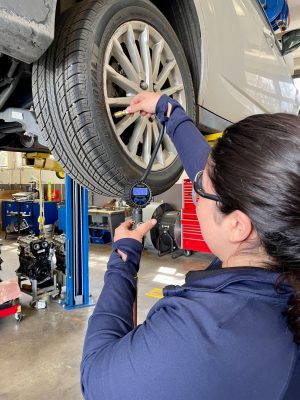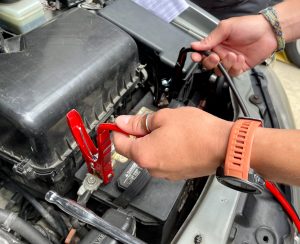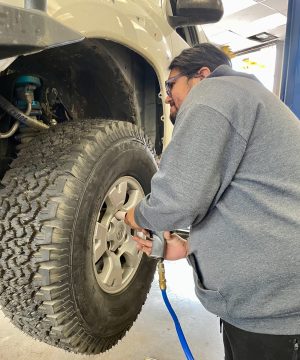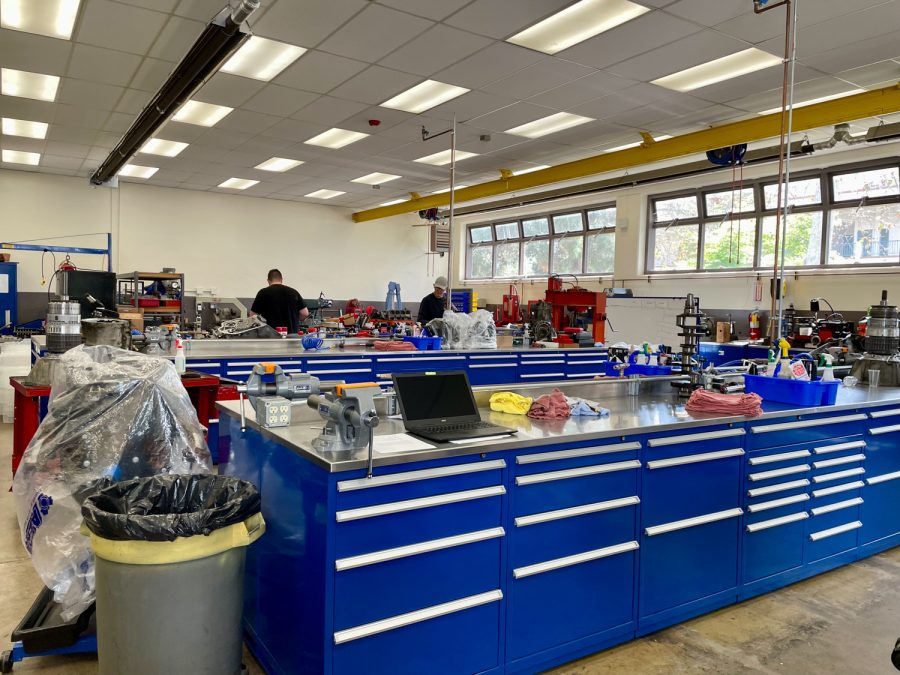College is the place where students start to live independently and start to learn and develop new skills. Students have to learn in order to support themselves without asking for help from parents or guardians all the time. One out of the few things students have to worry about is their cars whenever they commute or go off to buy necessities.
So, whenever driving from campus or to campus, it is always a good thing to know some simple and easy tips about how to keep your car in good condition.
How to fill up a tire with air

The first thing you need to do is check your tire pressure with a pressure gauge and then find an air dispenser. A pressure gauge is a tool mechanics use to measure the pressure inside tires. To use the pressure gauge, you have to remove the caps from the valves, then press the gauge onto the valve stem and hold it there until the gauge reading stabilizes. The gauge should display the tire pressure. It reads the PSI, pounds per square inch, and adds air if the pressure is too low until it reaches the required pressure. If it’s too high, release any air by using any tool to press down on the valve stem. Then there will be a hissing sound, this means that air is escaping from the tire.
Once you’ve checked the pressure, grab the air hose and align it with the valve stem. At that point, you can start pumping air into the tire.
While looking at the pressure gauge, make sure that the pressure is in between 32-38 PSI, for that is what is recommended according to instructor Brittanye Muschamp from the automotive and technology program at City College. Finally, when the pressure is at the right PSI, close up the valve tight with its cap.
“Always remember to check your tire pressure because if you lose 5-10 pounds per square inch in your tires, that can cause them to pop,” Muschamp said.
How to Jumpstart a Car

Whether you go out camping in the woods or get stuck in a winter storm, it’s likely that you will need to jumpstart your car. When jumpstarting a car, always make sure you know what kind of car you have. If the car runs on gas or diesel, you can use cables to connect your car to another.
When placing the cables on the battery you must first locate which side is positive and which is negative. Once you know that, place the positive clamp on the positive part of the battery, then repeat the same process with the negative side.
It’s important that you put the positive first because it can reduce the chances of a spark occurring around the battery, making it a safer process overall. If you have an electric or hybrid car, it’s recommended that you use a battery booster pack, which you can buy at any automotive store or on Amazon, they range from $30-$150 or more.
Oscar Cardenas, a student of the automotive and technology program, states that jumper packs are a huge help due to his experience on the road with friends.
“I recommend everyone to have a jumper pack in case your car dies,” Cardenas said.
How to Change a Tire

Whenever you are traveling back home for the weekend or back to campus, it’s always a good thing to know how to change a tire. In case your tire pops or becomes flat, you know how to change and place a spare without a doubt. Some of the basic tools you’re going to need for this are a jack, a lug nut wrench and a spare tire. You can find these items at any local auto store or convenient store.
First you have to locate where to place the jack underneath the car. There will be arrows or labels on the side or under the car to tell you the correct location.
Next, you take off the lug nuts with the wrench, remove the old tire and replace it with the new one, making sure it is straight and aligned. Once the tire is in the proper position, screw the lug nuts back in their rightful place. Finally, twist them tight with the wrench and you’re good to go.
Other Tips to Know
Other automotive tips from instructor Muschamp is that you carry a blanket, spare tire tools, water, snacks, first aid and the owner’s manual in your car at all times..
“It may sound weird, but you may never know where you are going to get stuck,” she said. “You should also have AAA because no matter where or who you’re stuck with, as long as you have a membership, you’re perfect.”
While students of the program worked on their projects, former student Angel Mateo joined the class to work on his car.
“Keep a fire extinguisher and a small tool kit,” Mateo said, recommending other tools people should have in their cars.
Students and staff commute almost everyday and learning these tips and ticks can be helpful to them and to share with others.



![Milton Alejandro Lopez Plascencia holds a flag showcasing the United States and Mexico on Feb. 7 in Santa Barbara, Calif. “It’s heartbreaking to see what is happening all across the country,” Lopez Plascencia said. “I [want] my voice to be heard by the community.”](https://www.thechannels.org/wp-content/uploads/2025/05/MGSImmigration-1-1200x800.jpg)


![The new Dean of Social Science, Fine Arts, Humanities and English, Eric Hoffman beams on May 2 in Santa Barbara, Calif. "My major professor in college [inspired] me," Hoffman said. "You can really have a positive impact on people's lives in education."](https://www.thechannels.org/wp-content/uploads/2025/05/MGSHoffman-2-1200x800.jpg)







